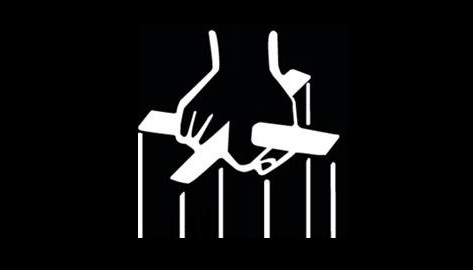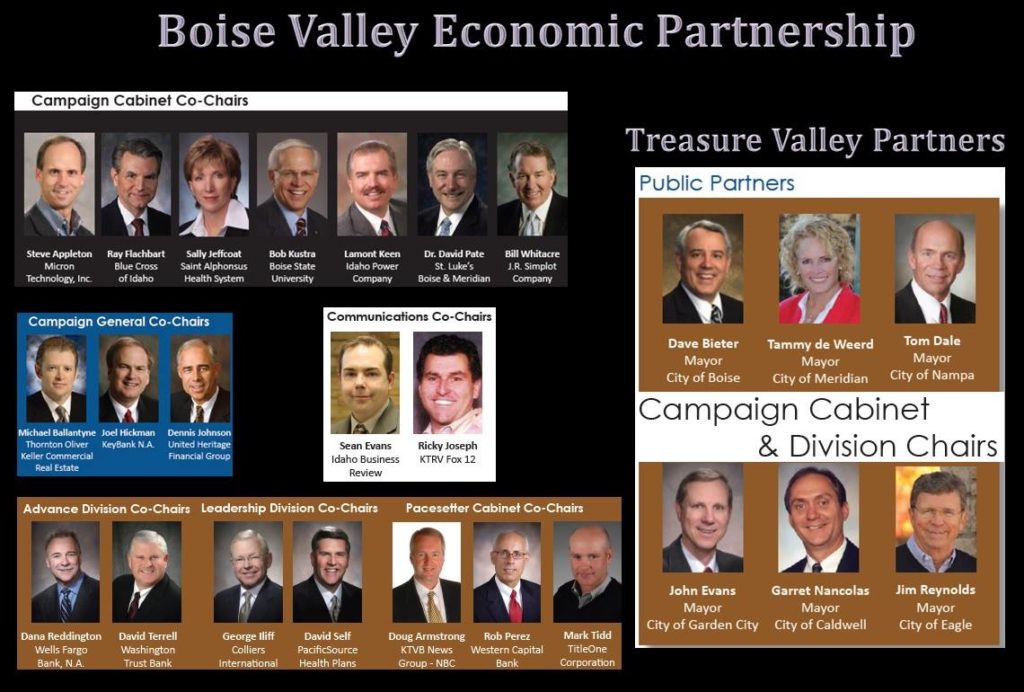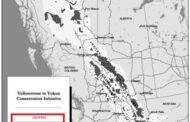Recently on the Fox News program hosted by Martha MacCallum, Patrick Byrne, now former CEO of Overstock gave a very revealing statement concerning his work for “the men in black” in our government. He implied that the Men in Black were the FBI but then he admitted that the FBI were just acting as errand boys for the Men in Black. Given that Byrne’s company, Overstock was the first company to have a supply chain that uses blockchain with bitcoin, it’s more likely that the Men in Black were from the Secret Service (Treasury Department’s law enforcement). But that’s just a guess.
What was intriguing to this writer was that Byrnes’ said he was asked to rekindle his relationship with Maria Butina, a Russian woman who came to the U.S. for the purpose of understanding American gun laws and philosophy apparently so that she could take the ideas back to Russia. She didn’t register as a foreign agent so now she is sitting in jail. It wouldn’t be much of a story except that she wanted to get a meeting with Donald Trump through Patrick Byrne at the Freedom Fest event thereby making the Trump-Russia connection true even though it was a contrived pretext.
Freedom Fest is apparently a big event for Libertarians held every year in Las Vegas. The whole story with Byrne, Butina and the “Men in Black” seems to be a plot line for a B-movie. It wouldn’t be more than that except that Patrick Byrne himself makes it an interesting story.
In 2018, Byrne did an interview with Vice News to talk about his companies and his activities. As you watch this video, take note of the fact that he has a picture of Mao Zedong on his wall and the names of his cats are Master Po (reference 1970’s Kung Fu) and Che Guevara. All three of those things are insights into Patrick Byrne.
Recalling that the whole Russian collusion story started with voting, I produced a cut down version of what I considered to be the most important things that Patrick Byrne said. The following is the cut down version of the video:
Patrick Byrne wants to undermine our country’s institutional foundations using technology as the weapon of choice:
Block chain meets the creation of capital which is land titling
Block chain meets central banking
Block chain meets voting
 Call me old fashioned but Byrne’s confession in the video and the above list defines Byrne as a seditionist and a traitor. What Byrnes’ said about land titling being the beginning of the creation of capital may not be precisely true but what is true is that if there is an existing land titling system and you screw it up, it could be the end of capitalism for sure. Since Mao Zedong is obviously a hero to Byrnes, it would seem that any idea promoted by Byrnes having to do with property ownership and the institutional foundations of the country should be viewed in that context.
Call me old fashioned but Byrne’s confession in the video and the above list defines Byrne as a seditionist and a traitor. What Byrnes’ said about land titling being the beginning of the creation of capital may not be precisely true but what is true is that if there is an existing land titling system and you screw it up, it could be the end of capitalism for sure. Since Mao Zedong is obviously a hero to Byrnes, it would seem that any idea promoted by Byrnes having to do with property ownership and the institutional foundations of the country should be viewed in that context.
A friend sent a link to quite a good article on the problems with blockchain as a public ledger for land titling. The title of the article is Real Estate Registry on Blockchain: Promise Land or Wishful Thinking?
I found a video – Modern Monetary Theory for Beginners. I didn’t hear anything different in it than I learned from Anthropology and Economics classes I attended so I think the professor is probably giving pretty much the straight story – at least the beginning of it on the history of money. How I found this particular professor was because of an article he wrote about the Mortgage Electronic Registrations System (MERS) that was one of the elements of fraud in the subprime mortgage crisis so he’s obviously done a lot of thinking about the problems of an electronic registry system as a replacement for county-based land title systems. The MERS system clouded the titles of thousands of properties which was great for business for real estate attorneys and a life shattering experience for homeowners.
I’m going to skip over blockchain meets central banking except to say that blockchain and bitcoin are just the kind of systems that are needed for the Communist Chinese system of social credit.
The benefits of blockchain proponents say is that it offers anonymity ![]() . One of the big problems is that everything with blockchain depends on a cryptological key. If society becomes dependent upon crypto keys for everything important, if you lose your cryptokeys, you lose everything. I don’t know about you but I couldn’t begin to count the number of important things I’ve lost over the years including keys. But they never cost me my life – my existence. Do we really want to depend on technology to that extent?
. One of the big problems is that everything with blockchain depends on a cryptological key. If society becomes dependent upon crypto keys for everything important, if you lose your cryptokeys, you lose everything. I don’t know about you but I couldn’t begin to count the number of important things I’ve lost over the years including keys. But they never cost me my life – my existence. Do we really want to depend on technology to that extent?
Medici Land Governance and Medici Ventures
Embedded within Patrick Byrne’s Overstock company, are two other companies, Medici Land Governance and Medici Ventures. Medici Land Governance is a blockchain land titling system that has been implemented in Rwanda, Mexico, Zambia and Teton County, Wyoming. The other company, Medici Ventures provides funding for “innovative” companies that use blockchain for transactions eliminating the need for “trust institutions” like banks, title companies, government oversight (implicit). This is good ![]() “Peer-to-peer transactions help us see the humanity in the people with whom we interact and do business“.
“Peer-to-peer transactions help us see the humanity in the people with whom we interact and do business“.
Systems such as the Medici Land Governance system don’t come out of thin air. Systems come about as a result of trying to solve a problem. When considering global problems, a systems solution for one country may cause huge problems in another country. Such is the case with electronic land titling. To see how this debacle began, we need to go back to 1994 and the Asia-Pacific Economic Cooperation (APEC) organization.
- +Global Free and Open Trade and Investment
APEC is a regional organization in which trade ministers of member countries negotiate and decide on “common” rule sets for international commerce. What has been presented to the people of this nation as trade agreements are really harmonization agreements to establish a common (as in communist) global legal framework for business and social enterprises. The objectives are global but the negotiations and agreements are accomplished in regional forums.
The following are excerpts from the 1994 APEC meeting held in Bogor, Indonesia:
Leaders’ Declaration of Common Resolve
5. . . .We call for the successful launching of the World Trade Organization (WTO). Full and active participation in and support of the WTO by all APEC economies is key to our ability to lead the way in strengthening the multilateral trading system. We call on all non-APEC members of the WTO to work together with APEC economies toward further multilateral liberalization.
6. With respect to our objective of enhancing trade and investment in the Asia-Pacific, we agree to adopt the long-term goal of free and open trade and investment in the Asia-Pacific. This goal will be pursued promptly by further reducing barriers to trade and investment and by promoting the free flow of goods, services and capital among our economies. We will achieve this goal in a GATT-consistent manner and believe our actions will be a powerful impetus for further liberalization at the multilateral level to which we remain fully committed.
We further agree to announce our commitment to complete the achievement of our goal of free and open trade and investment in the Asia-Pacific no later than the year 2020. The pace of implementation will take into account differing levels of economic development among APEC economies, with the industrialized economies achieving the goal of free and open trade and investment no later than the year 2010 and developing economies no later than the year 2020.
The World Trade Organization (WTO) and the World Bank Group are specialized agencies of the United Nations system. In 1996, the United Nations held an Interregional Meeting of Experts on the Cadastre in Bogor, Indonesia. The global institutions are always declaring this, that and the other so the product from this Interregional Meeting was titled The Bogor Declaration. The following are excerpts from the Declaration.
- +The Global Cadastre Project for Land titling and Management
The following are excerpts from the Bogor Declaration:
The Bogor Declaration of the International Federation of Surveyors (Archived)
1.1 An Interregional Meeting of Experts on the Cadastre was held in Bogor, Indonesia from the 18-22 March, 1996. The United Nations Department for Development Support and Management Services (DDSMS) worked closely with the Indonesian State Ministry for Agrarian Affairs, the National Land Agency (BPN), the National Coordination Agency for Surveys and Mapping (BAKOSURTANAL) and the International Federation of Surveyors (FIG) in organising the meeting. The meeting also received an important contribution from AusAID, the Australian agency for international development.
1.3 The meeting was a response to the problems of land management and environmental protection as stipulated in the Global Plan of Action for HABITAT II, and to the recommendations contained in Agenda 21 arising out of the United Nations Conference on the Environment and Development (UNCED), the “Earth Summit“, in Brazil in 1992. Due to the international importance of the subject, the meeting was included in the calendar of events leading up to the HABITAT II conference or “City Summit” in Istanbul in June 1996.
1.5 The main objective of this interregional meeting was to consider the desirable requirements and options for cadastral systems with particular emphasis on the Asia and Pacific region and to make recommendations to the United Nations, national governments and appropriate non government organisations (NGOs) on cadastral and land management issues.
1.6 The meeting recognised that all countries have individual needs but that countries at similar stages of development have some similarities in their requirements.
1.7 The meeting also recognised that a key to a successful cadastral system is to ensure that the three main cadastral processes of adjudication of land rights, land transfer and mutation (subdivision or consolidation) are undertaken efficiently, securely and at affordable cost and speed, in support of an efficient and effective land market.
6. To support the United Nations activities in institutional building and capacity development in the operation of cadastral systems.
7. To strengthen NGOs, and particularly professional organisations and learned societies concerned with cadastral activities in order that they may effectively contribute to the development and maintenance of cadastral systems.
3. To encourage their members to establish educational and research programmes in cadastre and land administration in their national higher educational systems.
Byrnes touts the fact that Overstock is the first company to have it’s own blockchain keiretsu. There is a good definition of keiretsu on Investopedia and the following is an introduction to a keiretsu for real estate investment. It should be noted that keiretsu is a syndicate organization that could be used for any line of business. It falls through the cracks of U.S. monopoly laws which were designed to prevent a single company from monopolizing a market. The keiretsu syndicates are operational monopolies comprised of a syndicate of businesses or investors that exist separately but operate as one.
The Keiretsu organizational structure was introduced into the United States as a way for American companies to compete in a global market. In 1990, the Harvard Business Review published an article about the keiretsu organization titled, Computers and the Coming of the U.S. Keiretsu.
Looking at the Medici Ventures keiretsu companies, it’s easy to see the syndicate organization. By the names of the companies, one can tell the purpose that the company fills in the syndicate. They correspond to the objectives Patrick Byrnes listed above to undermine trust institutions (i.e. land titling, central banking and voting). The one company name in particular that drew my attention was Bankorus. Given the way that IT naming conventions work, I read that as Bank of Russia which if correct means that the Bank of Russia is underwriting the replacement of the U.S. “trusted institution” of the central bank which brings us back to Maria Butina.
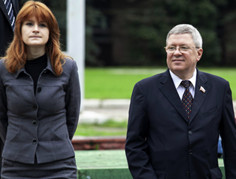 Maria Butina came to the U.S. as the Assistant to Alexander Torshin. Alexander Torshin is a Deputy of the Russian Central Bank. Source NPR.
Maria Butina came to the U.S. as the Assistant to Alexander Torshin. Alexander Torshin is a Deputy of the Russian Central Bank. Source NPR.
Butina met Paul Erickson in Moscow when he attended a meeting with David Keene, a former NRA president. Together, Butina and Erickson co-founded a Russian gun rights organization called The Right to Bear Arms and it is believed that they also had a personal relationship.
Paul Erickson is a Republican Fund raiser and a member of the NRA. In a Newsweek article, it said that Butina was using Erickson’s connections to infiltrate Republican circles on behalf of Russia. So it was Paul Erickson who was really colluding with the Russians and it was Patrick Byrne who attempted to drag Donald Trump into it by helping to facilitate a meeting between Butina and Donald Trump at the 2015 Freedom Fest. This video is the Q & A where Butina asks Trump a question:
The Keiretsu Organization
The following is a video of an expert who talks about the history of the Japanese Keiretsu. It’s being included here because he talks about banks being central players in Japanese Keiretsu syndicates.
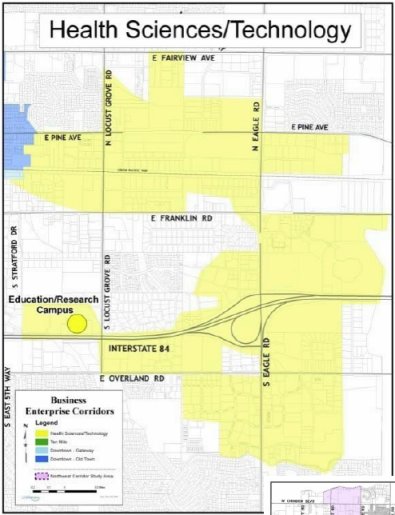 Upon hearing this definition of the keiretsu with a bank at the center of it, my mind went immediately back to the organizational structure of the economic construct I found in Meridian, Idaho that I dubbed a Trojan Triangle. The construct established a separate jurisdiction – Intermodal Commerce Zone with a governing board called an Intermodal Commerce Authority under Title 70 of Idaho law, Chapter 22 County-Based or City-Based Intermodal Commerce Authority. In other words, a Port Authority. One element of the zone presumably established in connection with the Intermodal Commerce Zone was a business enterprise and workforce Development Zone called “The Core“. The Core was the main component of Butch Otter’s plan (Project 60) to increase the GDP in Idaho by soliciting foreign investment and selling American citizenship through EB-5 regional centers.
Upon hearing this definition of the keiretsu with a bank at the center of it, my mind went immediately back to the organizational structure of the economic construct I found in Meridian, Idaho that I dubbed a Trojan Triangle. The construct established a separate jurisdiction – Intermodal Commerce Zone with a governing board called an Intermodal Commerce Authority under Title 70 of Idaho law, Chapter 22 County-Based or City-Based Intermodal Commerce Authority. In other words, a Port Authority. One element of the zone presumably established in connection with the Intermodal Commerce Zone was a business enterprise and workforce Development Zone called “The Core“. The Core was the main component of Butch Otter’s plan (Project 60) to increase the GDP in Idaho by soliciting foreign investment and selling American citizenship through EB-5 regional centers.
In connection with the Project 60 plan, a group led by the Chamber of Commerce was established that was called the Boise Valley Economic Partnership. The following is the description from their website (now archived):
The Boise Valley Economic Partnership (BVEP) is the regional economic development organization for the Boise Valley, which includes the cities of Boise, Meridian, Nampa, Caldwell, Eagle, Star, Garden City, and Emmett, Idaho. With a long-term mission of creating jobs, encouraging investment in the community and maintaining a balanced quality of life, BVEP is actively involved in the economic vitality of the Boise Valley.
As a separately funded division of the Boise Metro Chamber of Commerce, BVEP is driven by a partnership of communities, institutions, chamber organizations, and businesses in the Boise Valley. BVEP offers free customized, confidential services to businesses that are considering relocating, expanding or starting up within the Boise Valley.
The following image is from a brochure produced by the BVEP was captured in 2010 when I began writing about the Trojan Triangle construct (system). It shows the members of the Partnership which fits the description of a keiretsu. Given that a keiretsu exists for the benefit of the members and public officials were involved in the BVEP keiretsu, it doesn’t seem out of line to say that our form of government was changed by the authorization for and facilitation of the establishment of Public-Private keiretsus. Notice that the keiretsu is comprised of banks, real estate companies, a titling company and their own media team to ensure positive coverage for the syndicate’s activities.
The Treasure Valley Partnership (TVP) was a cross-jurisdictional syndicate of public officials that was established 1997. In 2004, a consulting firm was hired for a project called Blueprint for Growth. The main purpose of this project was to establish a collective land use planning system for the TVP members. In April of 2004 an announcement was made concerning a Land Use and Transportation Agreement and the hiring Robert Freilich of Freilich, Leitner & Carlisle to develop the plan and implement the ordinances. The website of the Blueprint for Growth project has a copy of the Intergovernmental Agreement. Notice Section 6.1 has a list of the Steering Committee which includes the Chambers of Commerce, member agencies and select interest groups. A brochure found on the Blueprint website at the time said this (emphasis added):
The Blueprint coordinates growth and development patterns to support the efficient delivery of services – bridging the gap between land use and transportation planning. The Blueprint will spur changes in local comprehensive plans, zoning ordinances and policy manuals to promote desired development development patterns.
Being the simple layperson that I am, since the keiretsu in the form of the Boise Valley Economic Partnership syndicate locked up land use planning for the benefit of their members through the intergovernmental agreement and the steering committee and they were soliciting communist Chinese money for economic development for the benefit of themselves through The Core and EB-5 regional centers, the question for Trump would be was he involved in a real estate keiretsu that included Russian money?
If this type of corruption reached Idaho, you can be sure that it’s everywhere especially since it is the U.S. Department of Transportation that was the main driver of it by way of transportation planning. Just to head off any accusations that I am a loon for thinking that such sophisticated criminal activity came to Idaho, click HERE and look for the word keiretsu.
The link on the above page about the keiretsu in Idaho is dead, but the pages exist in the archive and for the record, I don’t believe the Washington, Oregon, Idaho keiretsu is dead either.
- +Viet Nam and the CMEA
This paragraph was found in Willy Brandt’s Independent Commission on International Development Issues report: North-South: A Programme for Survival published in 1982.
In 1947 the United States initiated the Marshall Plan for the economic recovery of Europe. It insisted that the European countries should cooperate in the allocation of US funds, and the Organization for European Economic Cooperation (OEEC) was established for this purpose: in 1960 it became the Organization for Economic Cooperation and Development (OECD), with the United States, Canada and eventually most western industrialized countries as members. In 1949 a conference in Moscow led to the Council for Mutual Economic Assistance, or CMEA — also known as Comecon — comprising Bulgaria, Czechoslovakia, Hungary, Poland, Romania and the USSR, with the German Democratic Republic joining in the following year. They developed a separate international monetary system, and their trade was governed by long-term agreements related to five-year plans. As their economic system took shape, these countries had at first only modest relations with the rest of the world economy. Later on the Mongolian People’s Republic, Cuba and Vietnam joined the CMEA as developing country members; while Albania, which had joined later, left it.

